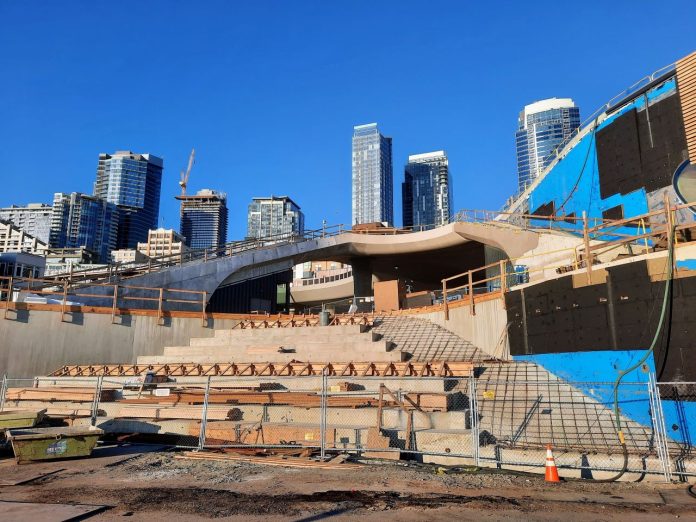
After years of construction disrupting the entirety of Seattle’s waterfront, an end to jackhammering and a final grand opening is finally in sight, with the city’s powerbrokers ready to take full credit. On March 7, the Downtown Seattle Association [DSA] hosted its annual “State of Downtown” event and a major theme was the hotly anticipated grand opening of downtown’s new and improved waterfront park next spring. Backers expected the new park and aquarium to be a jolt to the local economy and a showpiece for the city.
The speaker program included Joy Shigaki, CEO of Friends of Waterfront Seattle, and Leslie Koch, a donors’ representative with Elliott Bay Connections project, a public-private partnership to extend park improvements farther to the north. Both talked up the transformative potential of the linear park, with the new Seattle Aquarium and the Overlook Walk connecting it to Pike Place Market expected to open next year. The new pedestrian connection will join the new Marion Street overpass as a way to access the public spaces along the waterfront without dealing with the busy freight corridor that is Alaskan Way.
“The Overlook Walk [is] the real sweet spot and a selfie spot that’s going to give you the experience of a 360-degree views, the same height as the viaduct, for those of you who are really missing those views driving during the morning,” Shigaki said. “People talk about that a lot.”
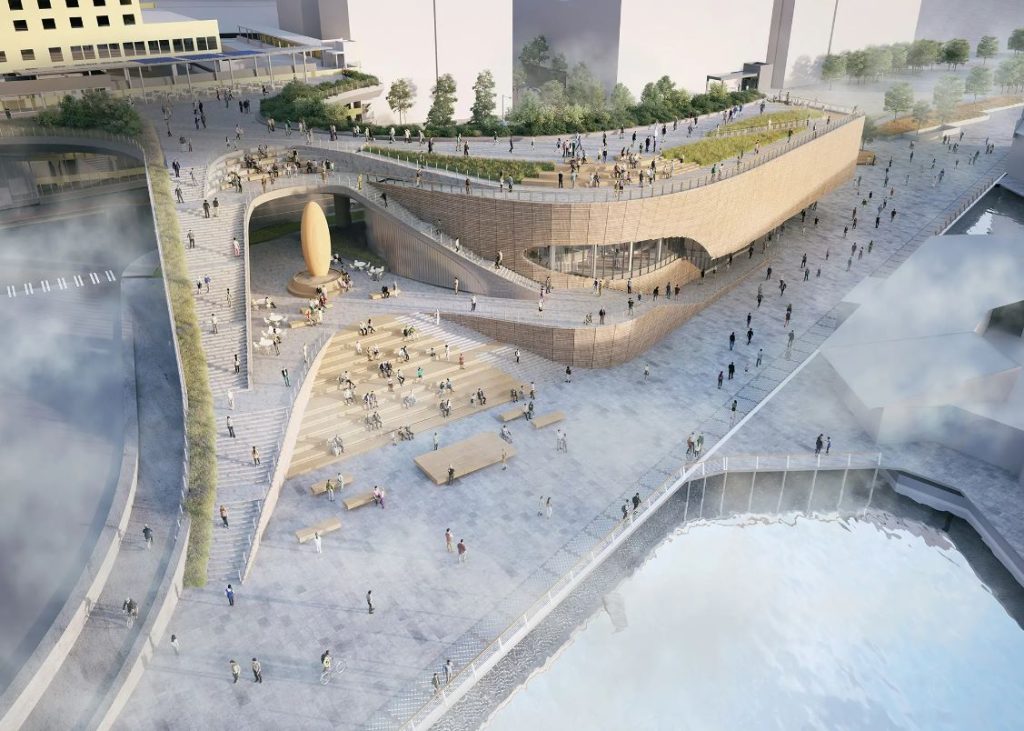
Already elements of the new waterfront are coming online. A new Pier 62 park opened in 2020 and an overhauled Colman Dock ferry terminal and a next door Pioneer Square Beach Habitat opened last year. The new waterfront Alaskan Way Boulevard is also open as is a new four-lane Belltown connector called Elliott Way — the City gave the pairing of streets an honorary Lushootseed name of “Dzidzilalich.”
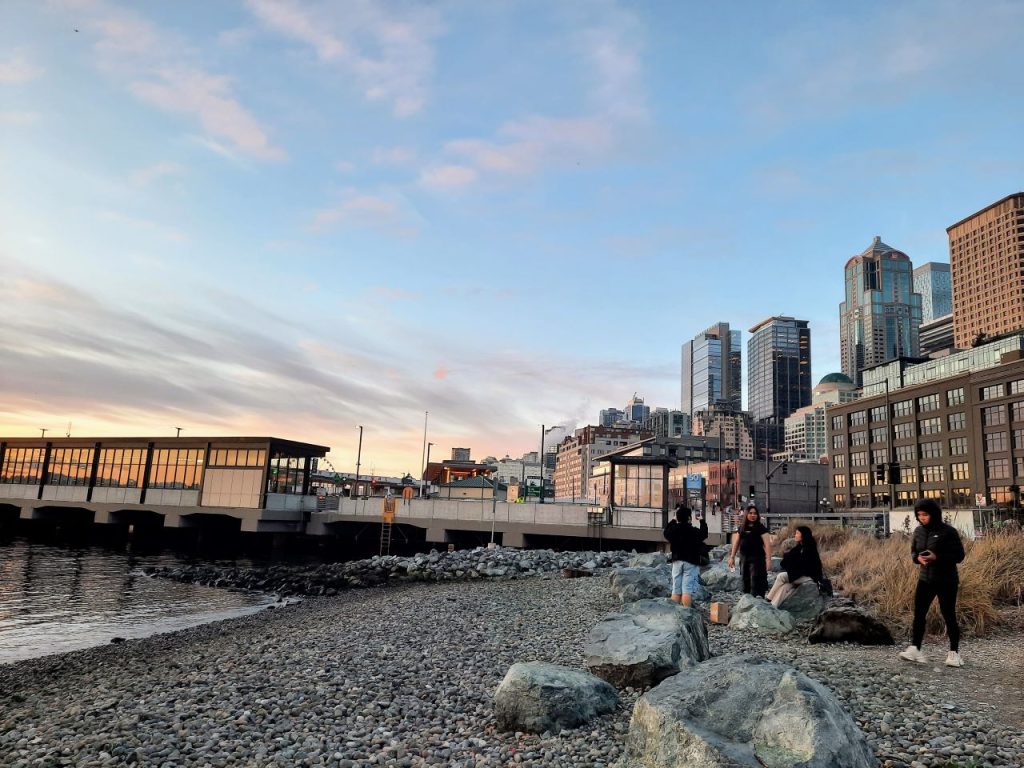
The Friends of Waterfront Park has been heavily programming Pier 62, with activities like giant chess boards and mini soccer fields in place on most days, and fitness or dance classes and musical performances scheduled throughout the year. “Over a million people have come to Pier 62, and it has been a reminder of how parks can be transformative that they’re made for and they make for dynamic, democratic cities,” Shigaki said.
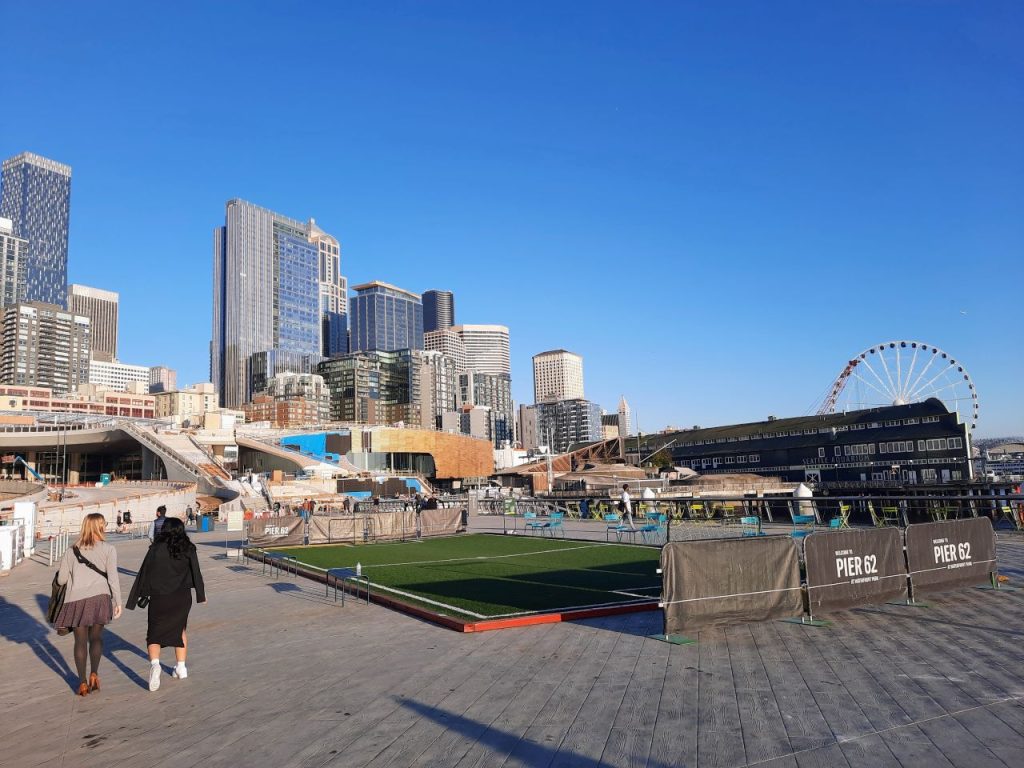
It’s been a long road to get here. Shigaki thanked the crowd of dignitaries from leading downtown businesses and nonprofits for bearing with the decade plus of construction impacts that brought forth the park and associated infrastructure. Seattle’s new waterfront park was made possible by tearing down the Alaskan Way Viaduct, an elevated double-decker highway that carried roughly 100,000 cars per day at its peak. The way the region opted to accomplish this was to dig a nearly two-mile highway megatunnel underneath the city to replace the bulk of the viaduct’s highway capacity, which added to the construction time, especially after a three year delay to extract and repair a busted tunnel boring machine, which had been the world’s largest.
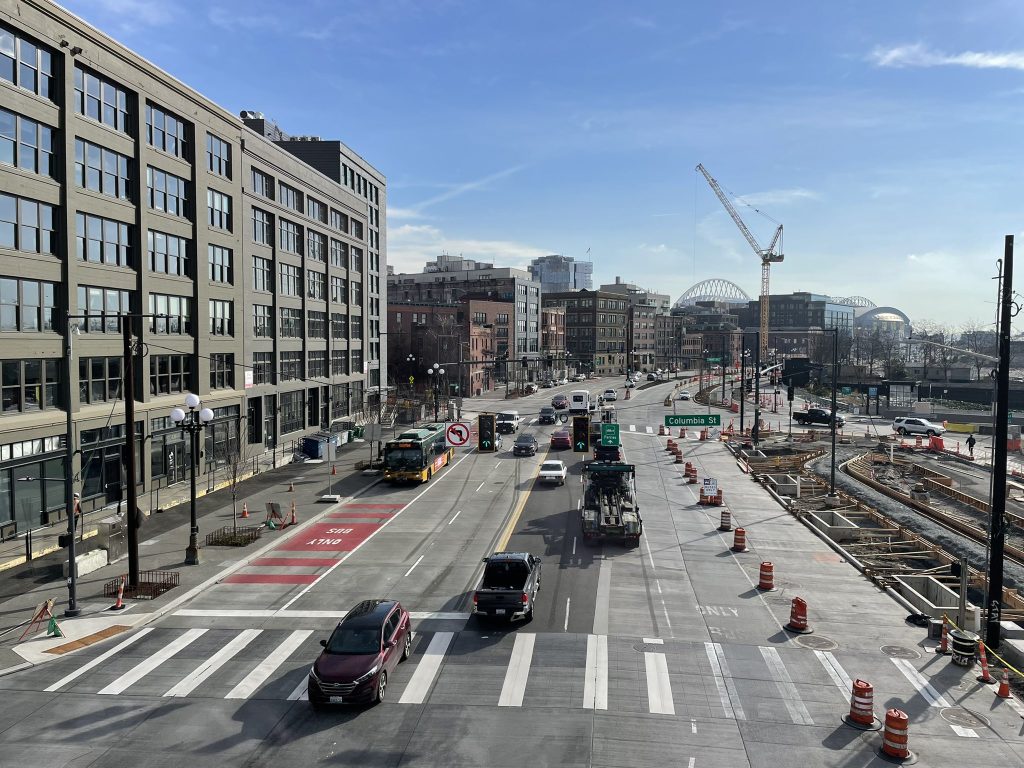
“Nationally, we’re seeing this trend of reclaiming old infrastructure projects, highways, double-decker highways, railroads, to be able to reclaim the beauty of our cities from what they once were,” Shigaki said. “And Waterfront Park is going to be part of that renewal, but it’s going to be part of the revitalization and part of creating a place that everyone sees themselves in and memories to be created.”
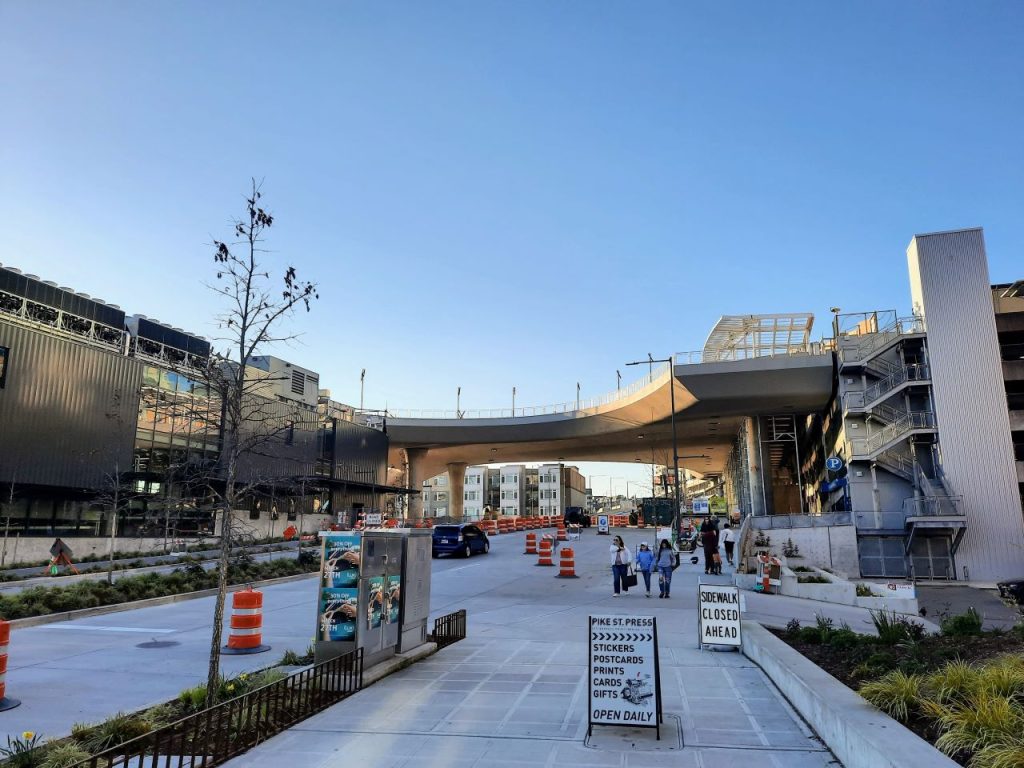
While local urbanist leaders like Cary Moon and former Mayor Mike McGinn argued the highway tunnel was not necessary and the focus should be on transit, pedestrian, and park improvements alone, ultimately highway tunnel boosters won out and have sought to frame the tunnel as inevitable and necessary for the park plans since. Of course, Moon, McGinn, and the larger People’s Waterfront Coalition movement against the downtown highway in either an elevated or buried form received no mention at the event.
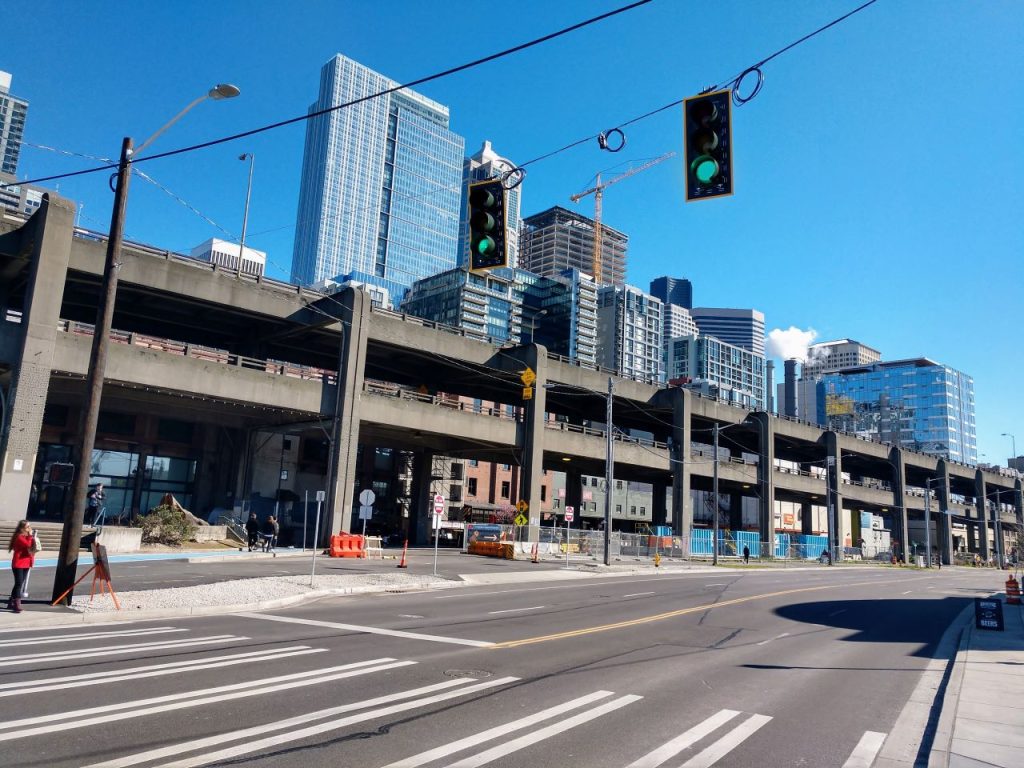
“This extraordinary, double-decker highway cut across the most beautiful part of our city, like the Embarcadero in San Francisco, like other cities across the nation,” Shigaki said. “It was not about human-centered design. It was about disconnection. But the audacity of the vision after the 2001 Nisqually earthquake, the conversations even before that was what happens when you build a new tunnel.”
Before the viaduct replacement project, the hulking highway polluted downtown with noise and air pollution and interrupted the flow of people from downtown to the waterfront. Now downtown finds itself relatively unobstructed and connected to its unique Elliott Bay waterfront — though the overbuilt Alaskan Way roadway, eight lanes near Colman Dock, isn’t the most welcoming sight to visitors arriving at downtown’s south end.
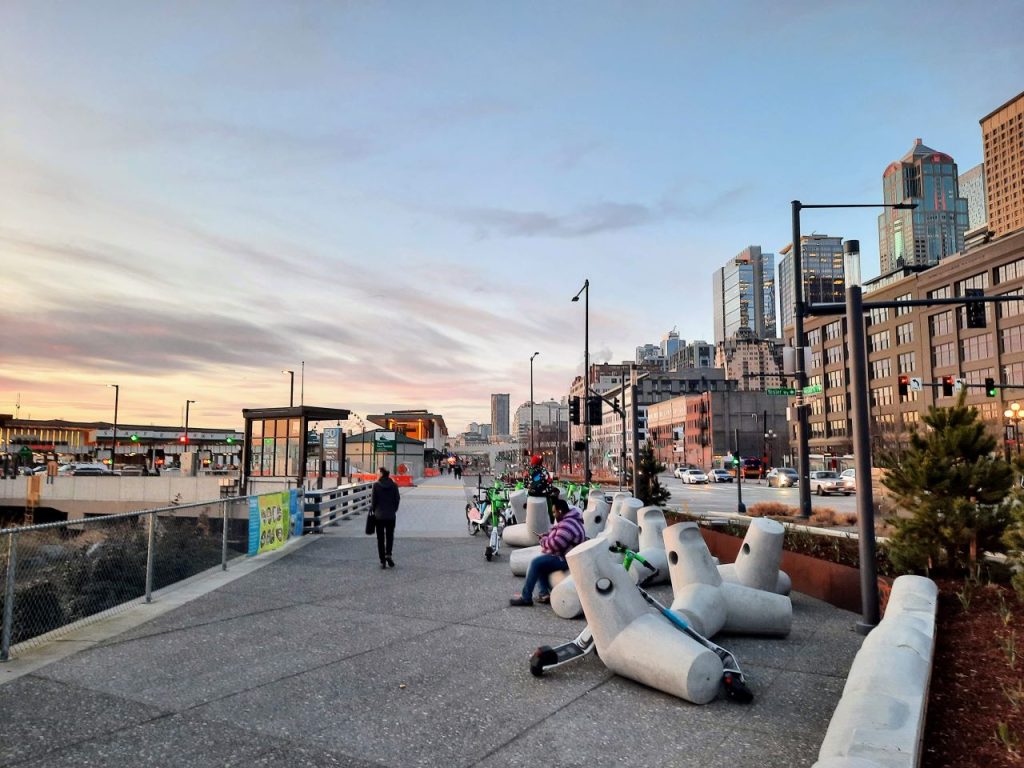
“Tear it down to reveal what is possible about a new waterfront and a new park to be born,” Shigaki said. “It is a 20-acre park that is in the shadow of the former viaduct. So I’ve met people who actually moved in after the viaduct came down and said, ‘What’s the big deal?’ Like you don’t remember. So part of the storytelling of this place is retelling that story, right? What it took to get here to take that double-decker highway down the political leadership residents advocates, this 20-acre park running from the stadium district all the way to Belltown will be creating this dynamic tapestry of experience of public space, connection to the waterfront, the tendrils back down to Pioneer Square, the 20-block Pike-Pine extension to Capitol Hill and down back to Pike Place Market is part of that vision of reclaiming this extraordinary space. There’s massive economic impact…”
Collectively, all the projects associated with the new waterfront account for more than $1.1 billion in construction work and 6,200 jobs overall, Shigaki said.
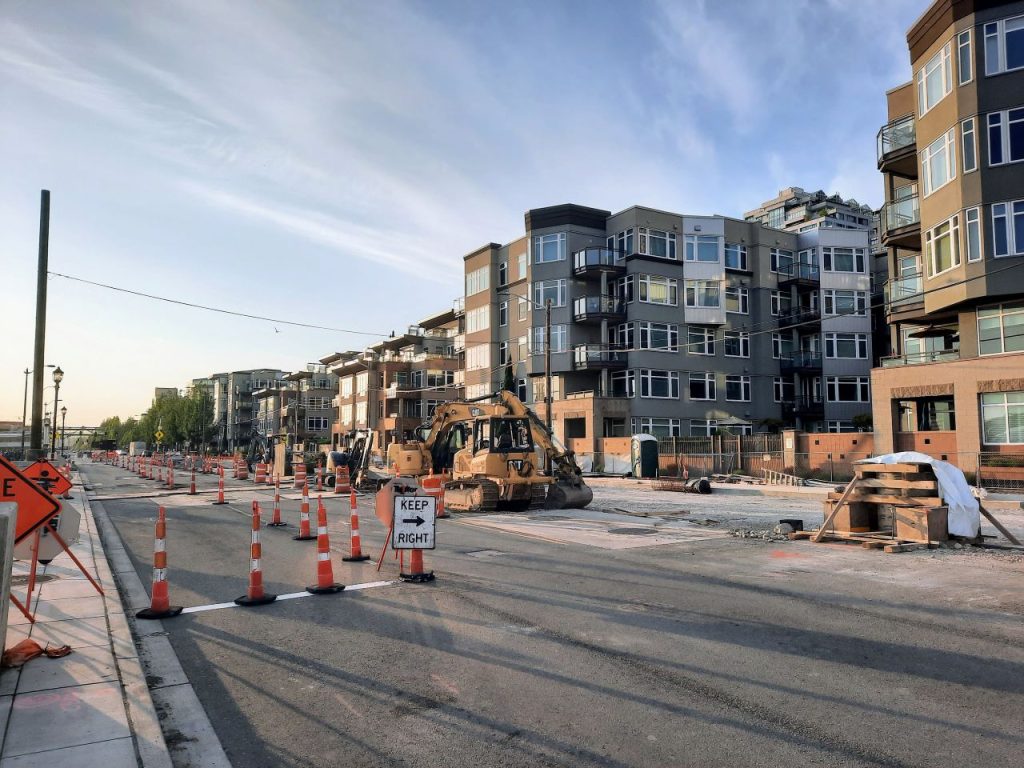
The 2001 earthquake damaged the viaduct, which dated to 1953, kicking off a chain of events that lasted over a decade but ultimately led to approval of a four-billion-dollar SR 99 tunnel and a billion-dollar new waterfront. The level of investment is impressive, and in fact the park project, which relied on a public-private partnership, is still shoring up its finances to finish off the remaining 12% of its fundraising campaign. Shigaki made a pitch for the companies and wealthy individuals in the room to chip in.
“We are wrapping up the campaign, Waterfront Park, which is a $170 million effort, and we raised 88% of that goal, which is extraordinary, and we’re in the last stretch to get there,” Shigaki said. “So it’s a real indication to all of you to join us to close this chapter of this campaign and move into how a waterfront park is going to be part of this town in this ecosystem.”
With an eye to the topic du jour, especially in corporate circles, Friends of Waterfront Seattle stressed the safety improvements being paired with the projects. Unlike most park spaces downtown that are operated by Seattle Parks and Recreation, Waterfront Park has been operated since last year by the City’s Seattle Center department, with former Waterfront Seattle director Marshall Foster at the helm — in partnership with Friends of Waterfront Seattle.
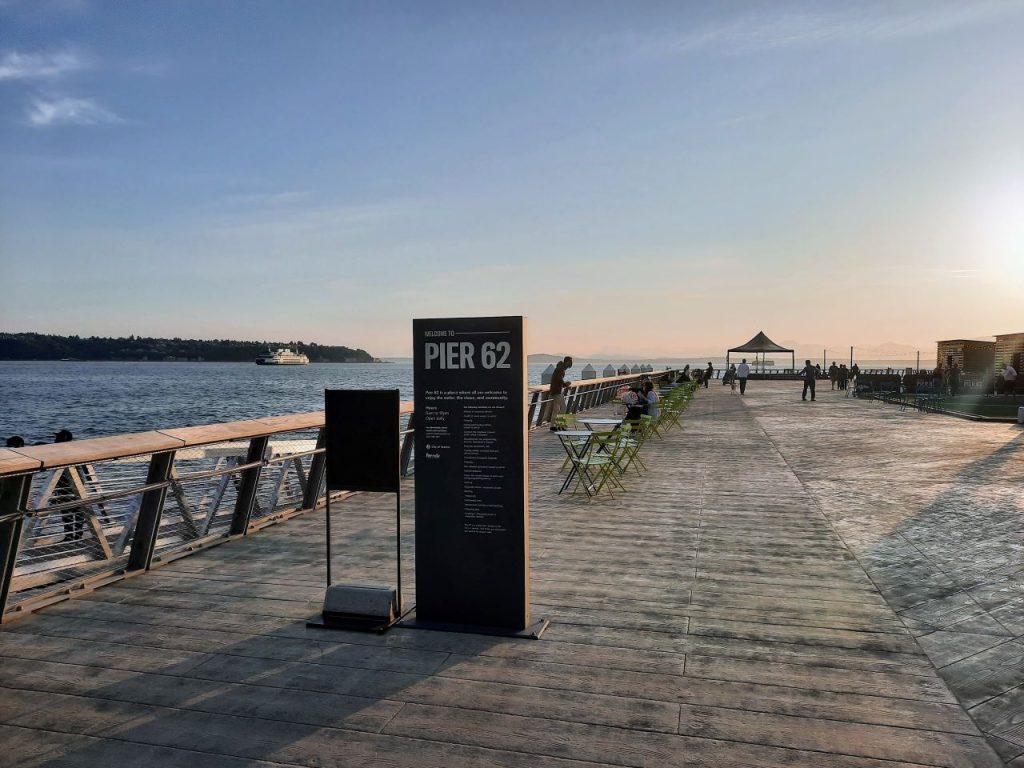
“We’re making public safety investments we’ve invested $3 million to date on Pier 62 alone modeling a new model for public safety that’s centered in a humane approach, as [DSA President] Jon [Scholes] talked about, we’re working with Project Reach to provide outreach workers for those who are on housed our staff are the eyes and ears on the park,” Shigaki said. “And a new partnership with Seattle Center is providing public safety officers to be able to be available to address issues to be able to work and enforce Park rules. And then you call the Seattle Police Department when it’s needed. But that unique approach is what we need to solve for some of these more challenging issues.”
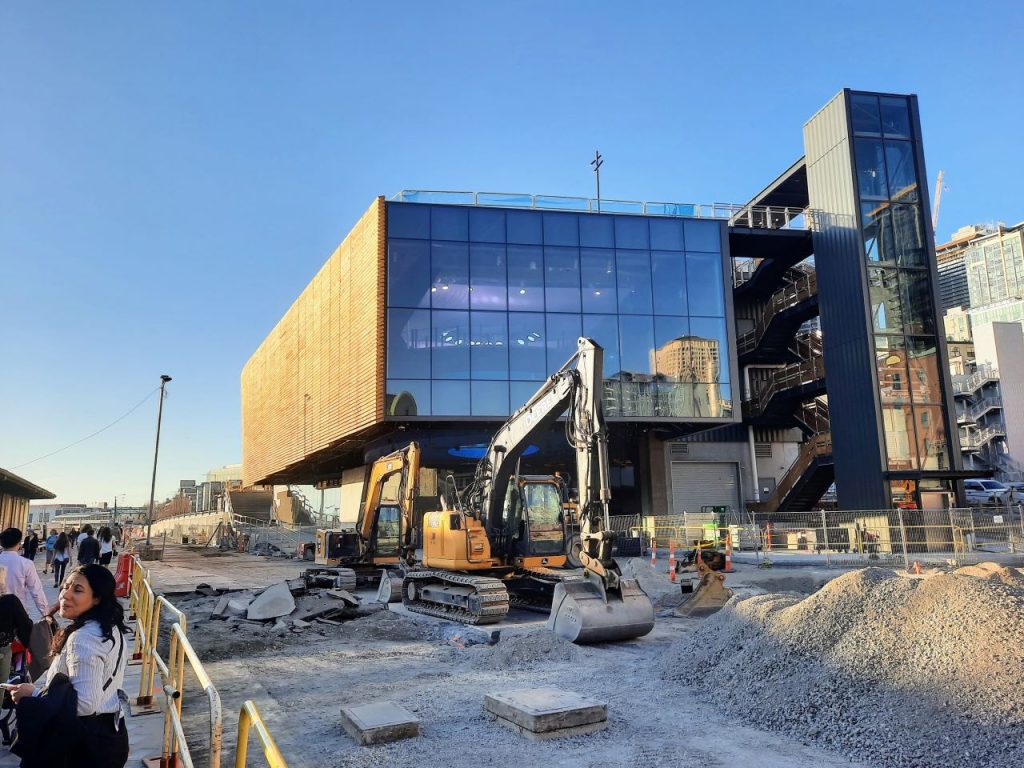
Taking a trip down the annals of Seattle history, Koch pointed to the foundational vision of the Olmsted brothers, the acclaimed landscape architects that designed many of Seattle’s major parks and parkways (ditto for most other major American cities). In 1903 a group of civil leaders wanted to make Seattle a beautiful city, she noted, “And they hired the Olmsted brothers. And as we all know, pick a park: Seward Park, Woodland Park, what would Seattle be without the Olmsted designed parks, and the Olmsteds really recognized what makes Seattle unique and gorgeous… 120 years ago, [they said] the primary aim should be to secure and preserve for the use of the people as much as possible in these advantages of water and mountain views.”
The Olmsteds’ vision included a world-class waterfront park for downtown, which has gone unrealized until now. Partially this is due to the lack of major parcel of open space in any prominent section, and also because the connections to the surrounding areas were relatively weak and short on pedestrian friendliness. 1974’s Waterfront Park, funded by the Forward Thrust ballot measure six years earlier, was the first major public park along the waterfront, a park that the waterfront redevelopment is completely rebuilding.
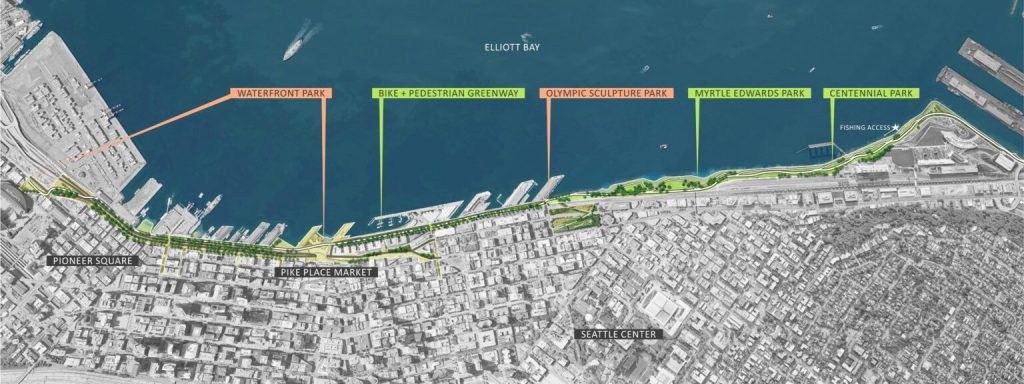
The Elliott Bay Connections effort aims to address that with an infusion of $45 million in philanthropist donations to improve the trail from Interbay all the way to Pier 62 and add more plantings and amenities in Centennial Park and Myrtle Edwards Park, which composes the waterfront through the Queen Anne foothill sections. The plan calls for replacing old waterfront streetcar tracks with a landscaped multi-use trail to help handle the expected walking, rolling, and biking traffic and beautify the street. Those improvements are promised by 2026, in time for the World Cup soccer matches that Seattle will be hosting.
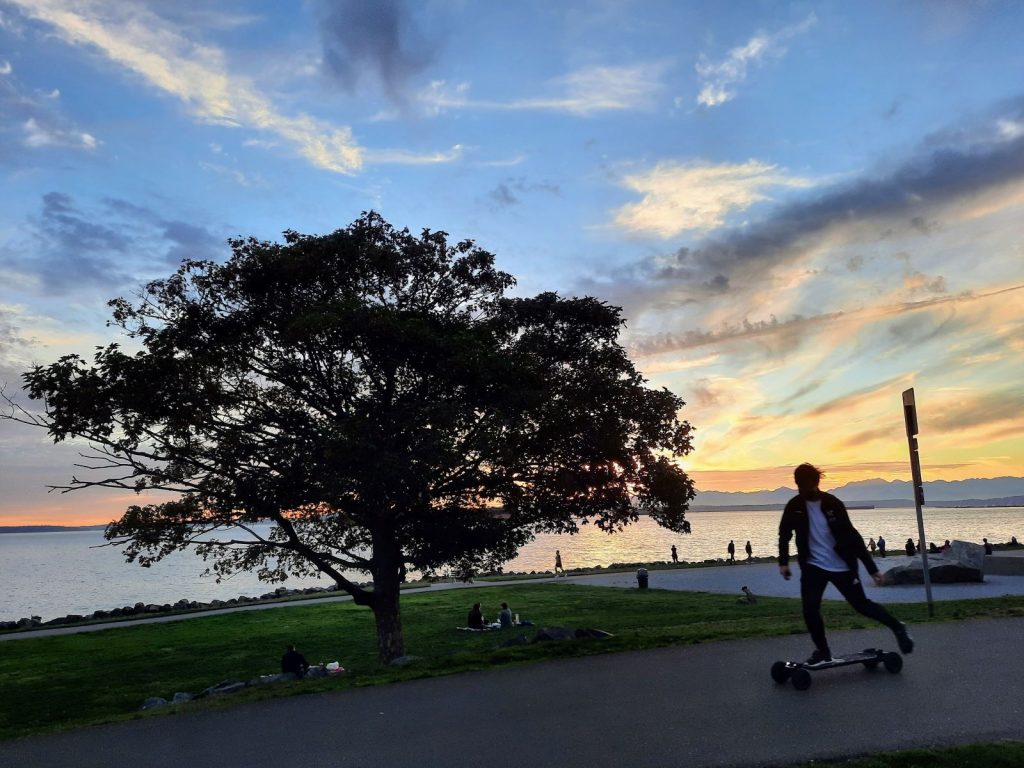
“What people don’t recognize, perhaps, is that the Olmsted brothers also had a vision for a waterfront park on the other side of the lake on Elliott Bay that was never realized. So when we think about the inspiration and vision for reclaiming the waterfront for all of us, it actually goes back that long, and then as we looked ahead from 1903, there were many generations of civic activists in this community who advocated for the removal of the viaduct, and taking the waterfront back for the people.”
The Olmsted vision will take another big step forward in 2025, and Seattle will be better for it.
Doug Trumm is publisher of The Urbanist. An Urbanist writer since 2015, he dreams of pedestrian streets, bus lanes, and a mass-timber building spree to end our housing crisis. He graduated from the Evans School of Public Policy and Governance at the University of Washington in 2019. He lives in Seattle's Fremont neighborhood and loves to explore the city by foot and by bike.

